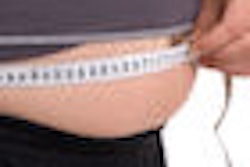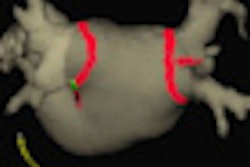Dear Ultrasound Insider,
Ultrasound offers considerable value in differentiating benign from malignant thyroid nodules, but that doesn't mean there isn't room for improvement. In three presentations at the 2009 RSNA meeting in Chicago, researchers discussed new methods that may improve the modality's diagnostic performance.
A French group found that an elastography technique was able to improve sensitivity for detecting malignant nodules, while Korean researchers showed that 3D ultrasound produced superior characterization of thyroid nodules. Another Korean team found that computer-assisted analysis of morphological and calcification features would add value in differentiating calcified nodules.
As an Ultrasound Insider subscriber, you have access to this Insider Exclusive before it's published for the rest of our AuntMinnie.com members. To learn more about thyroid ultrasound, click here.
In other recent news in your Ultrasound Digital Community, color Doppler ultrasound was found to predict the disease-free survival of breast cancer patients during neoadjuvant chemotherapy. For that article, click here.
And the use of Doppler ultrasound to monitor fetal health during high-risk pregnancies improves outcomes, according to a new meta-analysis from the Cochrane Collaboration of London.
In other articles, veteran readers of contrast-enhanced liver ultrasound studies were found to have better diagnostic performance than inexperienced radiologists, according to an Italian research team. Also, researchers from the University of Virginia are highlighting the promise of their new catheter ablation technique that combines intracardiac echocardiography and electroanatomic mapping.
In addition, a Spanish group found that ultrasound elastography can reliably differentiate between rapid or slow fibrosis in liver transplant patients.
Do you have an idea for a topic you'd like to see covered? As always, please feel free to drop me a line.




















